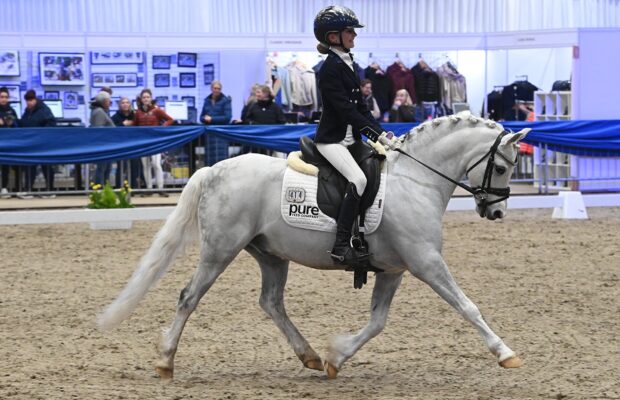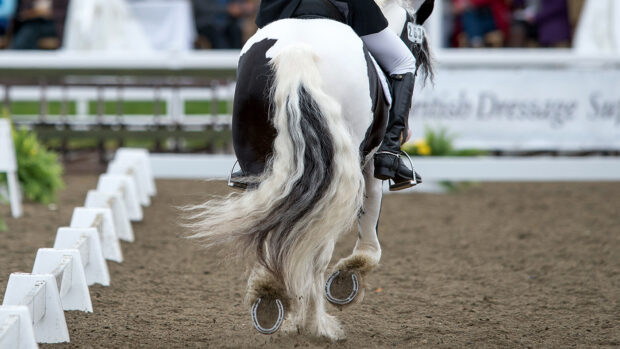Q: “My mare is only seven so we are still establishing balance and so on. She is consistent within the paces but struggles to maintain contact up and sometimes down the transitions mainly walk to trot and trot to canter. She will poke her head up then needs a correction before coming back onto a contact and mainly maintaining it throughout. She tends to relax down into the contact when coming down through the transitions apart from walk to halt. I think it’s due to needing to gain strength — she is built slightly downhill so I know this makes it more difficult for her. Her teeth, back and general health are all fine so I think it’s just a baby type of problem. Any tips or exercises greatly appreciated.”
A: I would agree that this is a weakness issue, especially as your horse is only young and built slightly downhill.
A good exercise I use on a lot of horses is to ride transitions through shoulder fore and on a large circle. This way you are always keeping the hind leg underneath the horse, teaching them that this is the correct way for them to balance themselves. If you focus on what the hind leg is doing and use the shoulder fore to help you, the contact should improve.
Continued below…
Related articles:
Shoulder fore positions the horse’s shoulders slightly to the inside of the hips. A horse that has the front footsteps landing slightly to the inside of their hind footsteps is travelling in shoulder fore with the movement requiring the horse to “articulate” more with the joints in the hind end, thus helping the horse balance better. It can be difficult to feel if you are in shoulder fore, so someone on the ground is useful.
The way to achieve shoulder fore is to use your inside leg forward on the girth into the outside hand. Ask your horse to gently flex into the inside hand — too much flexion is counter productive — and have your inside leg quietly at the girth.
Ride the transitions very gradually. If it takes a few steps longer, for example from trot to walk, but the horse has managed to stay in balance and with a contact, be happy with this. It is much better to build up slowly rather than expect too much straight away.
Make sure you use enough seat and that you are in good balance in the centre of the horse so that you are the horse’s point of balance.
When you are in shoulder fore, bring your inside shoulder back slightly but make sure your weight is evenly distributed in both stirrups.
When you are out hacking, use the hills, because that will really help your horse to build muscle and be able to hold herself in a more balanced way.
Keep repeating and as long as it is going in the right direction, keep building. You must be clear about what you asking and keep repeating, keeping your hands very still, riding tall, and remaining very balanced.
As a rider you could build up your own strength, which means you will be stronger riding through the transitions. Pilates is great for this.




